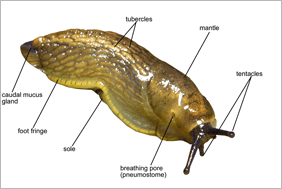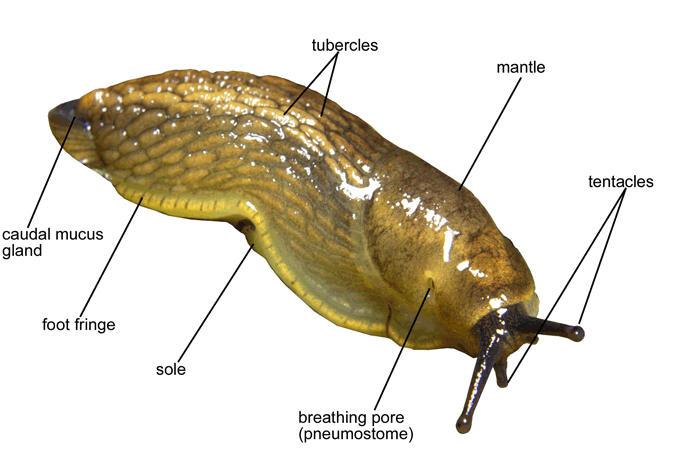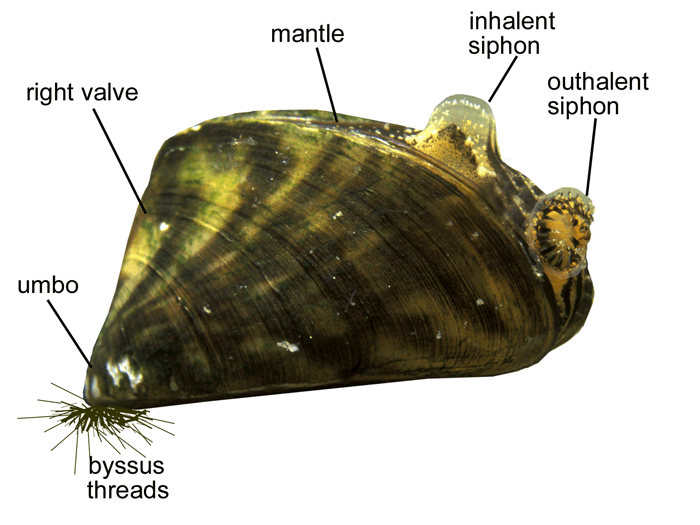
What are molluscs?
Molluscs are soft-bodied, cold-blooded animals lacking a backbone i.e. cold-blooded invertebrates.
 |
They have a very wide range of body plans. The gastropod design (snails and slugs) should be familiar to everyone and these are literally the head-foot animals (gastro – stomach plus head; pod – foot) with the head, mouth and sensory organs (two eyes on stalks) set over a muscular pad, the foot, on which they walk or glide along. The first thing that one notices on handling gastropods is that they are cold and slimy and therefore not very endearing. Slime is essential to lubricate their movement and contains a lot of water so gastropods live in damp places and generally move about only after rain. |
 |
Slugs have at best only a tiny internal shell and rely on their thick outer skin and abundant slime to deter predators, and so are even more reliant upon wet conditions. Snails can retreat into a horny envelope called the shell which protects them not only from drying out but also from being eaten. In general, the softest and most vulnerable parts are concealed inside the shell from which only the head and foot protrude. In some species (prosobranchs) the shell aperture is plugged by a thick, horny plug called an operculum as additional protection. This is, however, commoner in species which live in the sea. Animals considered on this site are all land or freshwater (non-marine) molluscs. |
 |
The other main non-marine group are the bivalves (pearl mussels, zebra mussels and pea shells) found in lakes, rivers and swamps. In the aquatic environment they largely feed by sucking in and filtering water to remove small food particles. They do this through siphons which play a stream of water over the gills to extract oxygen and food. The foot in a bivalve is hard and muscular, used not for gliding along, but for digging the mollusc into bottom sediment where it is protected from predators. Additional protection is provided by the bivalve shell which is calcified and hard and can close firmly if the animal is attacked. Most molluscs live in the sea where the cephalopods, a third large group are found. In cephalopods (squid, octopus) the primitive eyes of gastropods are replaced by large, very well developed eyes, comparable to our own. The gastropod foot has been replaced by eight muscular tentacles with suction pads and the shell is internal or missing. Cephalopods are absent from freshwaters. |
×


